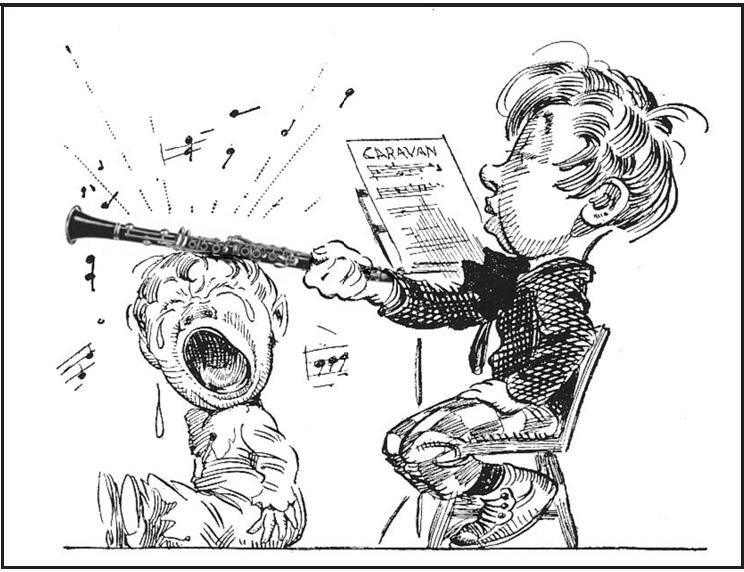Jazz is a unique tradition, one that continues to evolve from its humble New Orleans roots. This noble American art form is unique within Western music, in that it’s essentially an aural one, passed down through generations.
As a result, the system of standard music notation is very limited for learning jazz. The idiosyncrasies, the nuances, are learnt not only by listening to recordings, but from countless hours of study with a teacher.
This is a fundamental essence of what makes jazz so unique: the “passing of the torch” from one generation to another. To the student, the teacher is much more than merely a teacher. We are mentors, guides, dare I say spiritual gurus, instructing our disciples in the ways of a century old tradition.
However, it is at this juncture that I feel it necessary to point out a slight unfortunate paradox. We jazz musicians are, by nature, lazy buggers. Our two passions in life: playing music and sleeping all day. Sure, “pass the torch” and all that stuff… but the last thing we want to do is wake up before noon to go and teach.
But alas, the gigging life is an unstable one, and those bills aren’t going to pay themselves. So teach we must.
But luckily for today’s lazy jazz muso, there are many useful ways to teach with a minimum of effort. So here we go with the Professor’s Guide to “Phoning In” a Lesson.
 Let’s start at the beginning. Even if your student arrives punctually, you will want to make sure the lesson starts as late as possible. It’s a simple formula: the more time you waste, the less time you’ll have to teach!
Let’s start at the beginning. Even if your student arrives punctually, you will want to make sure the lesson starts as late as possible. It’s a simple formula: the more time you waste, the less time you’ll have to teach!
Here are some procrastination suggestions:
-make a coffee
-complain about last night’s gig
-complain about reeds (careful with this one though—this could easily take up the whole lesson)
And once the lesson has already officially “started,” there are still many ways to eat into lesson time.
Some tips from of my personal repertoire:
-Breathing. An important part of playing a wind instrument. Get the kid to run around the block 4-5 times, with the instruction that it’s good for their breathing development. This is a good chance for you to catch up on emails.
-Living in NY, I find lesson time a good opportunity for running errands: getting washing picked up from the laundromat, getting my mail, etc. The mentor/protege bond is a good opportunity to utilize some free “light” labor.
-The modern age of technology has provided some wonderful advances in teaching aids. For example, since the advent of cell phones, it’s been much easier to pretend to work while you’re checking Facebook. Feel free to make use of this while your student stumbles through their scales.
-Perhaps the most valuable use of lesson time for the working musician: catching up on sleep. It’s a safe bet that most jazz musicians were up all night either: drinking, doing a gig, or drinking while doing a gig. Teaching a lesson the next day is a great way to catch up on some much needed rest.
Here are some ways to catch a quick nap during a lesson:
–Spiritual connectedness. It’s important for a musician to learn how to clear the mind for maximum creativity. Therefore, spend a good amount of time practicing “meditation.” (I recommend playing some loud Eastern transcendental music to cover up your snoring.)
–Listening time. Focused listening to recordings of the masters is an important part of development. I recommend avoiding early recordings which, due to technical limitations of the time, are only about three minutes long. (For more quality nap time, try one of the Jazz at the Philharmonic tracks. Some are over 10 minutes long!)
On another note, occasionally you may come across an exceptional student, one that is naturally musically gifted. Such students may show enthusiasm to learn, and pick up on things quickly. These students will require your attention, because such talent shouldn’t be ignored: make sure you teach them bad technique and incorrect theory so they won’t get too good and steal your gigs.
And there you have it: our sacred tradition carried forth for another generation. Now if you’ll excuse me, I’ve been spending 20 minutes writing this, and I really should go. I’m in the middle of a lesson.
Reedman extraordinaire Adrian Cunningham is the leader of Professor Cunningham and his Old School Jazz Band, based in New York City. Adrian Cunningham was voted in a 2017 Hot House Jazz Magazine readers’ poll the Best Alto Sax Player in New York. His most recent album is Duologue, issued on the Arbors Jazz label. Visit him on the world wide web: www.adriancunningham.com.





















